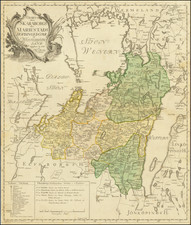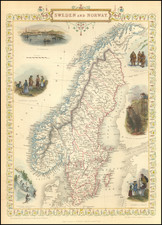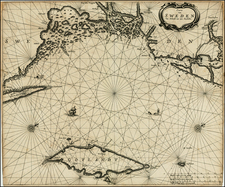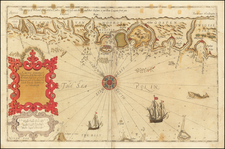Rare 1808 folding map of Elfsborgs region of Southwestern Sweden, from the Gothenburg region northward
The map shows administrative divisions; lakes and other bodies of water shown by hachures.
The map is part of a landmark set of modern maps created by Samuel Gustaf Hermelin and Carl Gustaf Forssell between 1799 and 1818.
Samuel Gustaf Hermelin was a Swedish industrialist, diplomat, and mapmaker. He was part of the Swedish nobility.
Hermelin was born on April 4, 1744, in Stockholm, Sweden, and died there on March 4, 1820. He was the son of Carl Hermelin, a member of the council of state, and Hedvig Ulrika Benzelstierna. He was educated at Uppsala University, starting September 27, 1760, and later worked in various positions related to mining and chemistry. Hermelin married twice: first to Maria Elisabet Sandels in 1773, who died in 1779, and then to Hedvig Augusta af Söderling in 1785, who died in 1794.
By the age of 17, Hermelin had completed the necessary studies to enter the mining college, where he began as an observer in 1761. He deepened his knowledge in the laboratory and spent years conducting geological field studies and metallurgical experiments. In 1764, he experimented with copper smelting at Åtvidaberg and later, with coal minerals in Skåne. He traveled to Norway in 1768 to study its geology and mining industries. Hermelin received a scholarship in 1769 to visit Sweden's mining sites, focusing on the quality of copper and introducing new methods to improve it. In the 1770s, he became a partner in an industry processing pyrite from mines.
In 1782, King Gustav III sent him to North America to study geology and promote Swedish trade interests. Despite carrying a ministerial letter, his mission remained discreet due to Sweden's relations with England. Hermelin was well-received in America, inducted into the Cincinnatus Order, and extended his stay due to illness. His return trip included studies in Germany, the Netherlands, France, and England.
Hermelin opposed the absolute monarchy in Sweden and was involved in the political opposition. He was questioned for his potential involvement in the 1792 assassination of Gustav III but denied all connections and allegedly avoided trial by bribing a police chief.
Hermelin was instrumental in promoting the use of Sweden's natural resources, leading to his extensive travels and the production of geographical maps. The Hermelin atlas, published from 1796 to 1818, marked a significant phase in Swedish cartography, although Hermelin faced financial losses from this project.
Later, he attempted to develop the iron industry in Norrbotten but faced several setbacks, including natural disasters and the war of 1809, which ultimately led to his bankruptcy in 1812. Despite this, the Swedish parliament granted him an annual pension for his geographical contributions from 1818.
In 1784, Hermelin became a Foreign Honorary Member of the American Academy of Arts and Sciences. He also joined the American Philosophical Society in Philadelphia as an international member in 1785.














![[Map of Sweden and Norway] Карта Швеціи и Норвегіи](https://storage.googleapis.com/raremaps/img/small/66784.jpg)